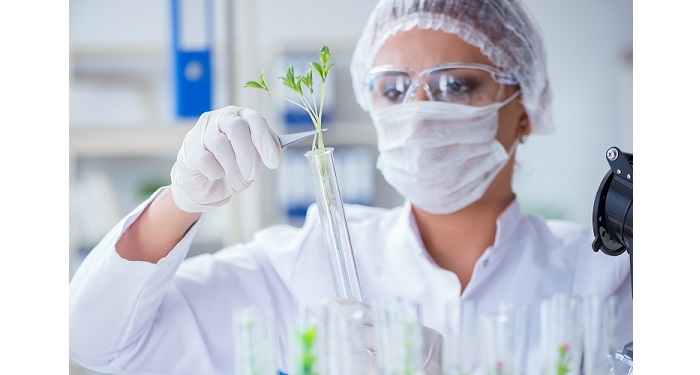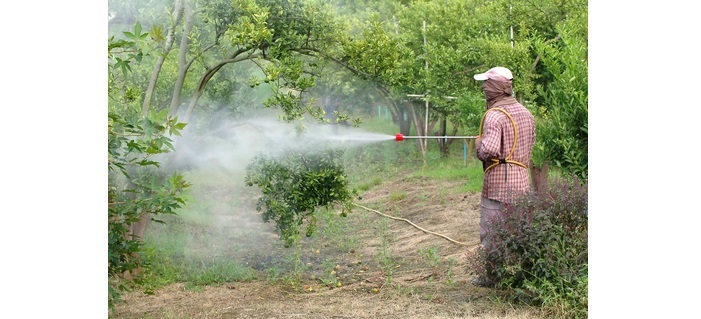
 Data Structure
Data Structure Networking
Networking RDBMS
RDBMS Operating System
Operating System Java
Java MS Excel
MS Excel iOS
iOS HTML
HTML CSS
CSS Android
Android Python
Python C Programming
C Programming C++
C++ C#
C# MongoDB
MongoDB MySQL
MySQL Javascript
Javascript PHP
PHP
- Selected Reading
- UPSC IAS Exams Notes
- Developer's Best Practices
- Questions and Answers
- Effective Resume Writing
- HR Interview Questions
- Computer Glossary
- Who is Who
Handling & Sterilization of Plant Material
Introduction
Handling and sterilization of plant material is an important aspect of any laboratory or plant research facility. Plant material, such as leaves, stems, and seeds, can be contaminated with microbes and other pathogens that can affect the results of research. To ensure the accuracy and reliability of research, it is important to properly handle and sterilize the plant material.
In this tutorial, we will discuss various methods of handling and sterilization of plant material.

Part 1: Handling of Plant Material
Handling of plant material involves the proper collection and preparation of the sample for sterilization. Before collecting plant material, it is important to choose a suitable plant that meets the research requirements.
The plant should be healthy and free of any disease or infestation. Plants that are grown in contaminated soils or exposed to pollution should be avoided.
The collection of plant material should be done using sterile equipment such as scissors, forceps, and scalpels. It is important to avoid any contact with the plant material using bare hands to avoid contamination from the skin microbiome.
The equipment used for the collection should be sterilized by autoclaving, ethylene oxide treatment or UV light. Gloves should be worn to protect the hands from any contamination.
Once the plant material has been collected, it should be placed in sterile bags or containers. The containers should be labelled with the plant name, date of collection, and any other relevant information.
The containers should be kept in a cool and dark place to avoid any damage to the plant material.
Part 2: Sterilization of Plant Material
Sterilization of plant material involves the removal of any microbes or pathogens that may be present on the plant material. Sterilization can be done using various methods, including chemical treatment, heat treatment, and radiation.

Chemical Treatment
Chemical treatment involves the use of various chemicals to sterilize the plant material. Commonly used chemicals include sodium hypochlorite, hydrogen peroxide, and ethanol. Sodium hypochlorite is a strong oxidizing agent that can be used to kill bacteria, fungi, and viruses.
Hydrogen peroxide is a powerful oxidizer that can be used to sterilize surfaces and equipment. Ethanol is a common disinfectant that can be used to kill bacteria and viruses.
To sterilize plant material using chemical treatment, the plant material is soaked in a solution of the chosen chemical for a specified time. The solution should be prepared using distilled or deionized water to avoid any contamination from other chemicals.
Heat Treatment
Heat treatment involves the use of high temperatures to sterilize the plant material. This method is commonly used for the sterilization of seeds and soil. Heat treatment can be done using dry heat or moist heat.
Dry heat involves heating the plant material in an oven at a high temperature for a specified time. Moist heat involves heating the plant material in a moist environment, such as an autoclave or a pressure cooker.

The temperature and time of exposure for heat treatment should be determined based on the plant material and the level of contamination. The plant material should be placed in a suitable container or bag before heat treatment.
After heat treatment, the plant material should be allowed to cool to room temperature before being handled.
Radiation
Radiation treatment involves the use of ionizing radiation to sterilize the plant material. This method is commonly used for the sterilization of medical equipment and pharmaceutical products. The most commonly used ionizing radiation is gamma rays.
Radiation treatment should be done in a specialized facility that is equipped with the necessary equipment and safety measures. The plant material is placed in a suitable container or bag before irradiation.
The exposure time and dosage of the radiation should be determined based on the plant material and the level of contamination. After irradiation, the plant material should be allowed to cool to room temperature before being handled.
Part 3: Best Practices for Handling and Sterilization of Plant Material
To ensure the best possible results, it is important to follow some best practices for handling and sterilization of plant material. These include ?
Use of Sterile Equipment
All equipment used for the collection, handling, and sterilization of plant material should be sterilized before use. This includes scissors, forceps, scalpels, containers, and bags. Sterilization can be done using autoclaving, ethylene oxide treatment, or UV light.
Proper Labelling
All containers used for the collection and storage of plant material should be labelled with the plant name, date of collection, and any other relevant information. This helps to avoid any confusion and mix-ups during handling and storage.
Avoiding Contamination
The plant material should be handled with care to avoid any contamination. Gloves should be worn, and contact with the plant material using bare hands should be avoided. All surfaces and equipment should be properly disinfected before and after use.
Choosing The Right Sterilization Method
The sterilization method should be chosen based on the type of plant material and the level of contamination. Chemical treatment, heat treatment, and radiation can all be used for sterilization, but the best method will depend on the specific requirements of the research.
Proper Storage
After sterilization, the plant material should be stored in a cool and dark place to avoid any damage. The containers used for storage should be sealed to avoid any contamination.
Conclusion
Handling and sterilization of plant material is an important aspect of any laboratory or plant research facility. Proper handling and sterilization of plant material can help to ensure the accuracy and reliability of research results.
Sterilization can be done using various methods, including chemical treatment, heat treatment, and radiation. To ensure the best possible results, it is important to follow some best practices for handling and sterilization of plant material, including the use of sterile equipment, proper labelling, avoiding contamination, choosing the right sterilization method, and proper storage.
By following these guidelines, researchers can ensure the accuracy and reliability of their research results.

